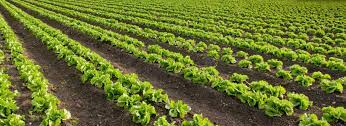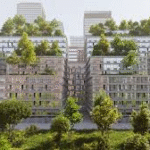Now Reading: Save Water, Grow More: Why Drip Irrigation Works Best 2025
-
01
Save Water, Grow More: Why Drip Irrigation Works Best 2025
Save Water, Grow More: Why Drip Irrigation Works Best 2025

Table of Contents
In a world where water is becoming more precious every day, one simple technology is helping farmers, gardeners, and even home growers save water, grow healthier plants, and increase their yield. It’s called drip irrigation—and it’s changing the way we think about watering.
Drip irrigation is not new, but its value is being rediscovered in today’s age of climate change and water shortages. It offers a targeted, efficient method of watering plants directly at the root level, using less water and fewer resources than traditional watering systems like sprinklers or flooding.
This system, used in everything from large-scale agriculture to small balcony gardens, is now seen as one of the most important tools in sustainable farming and gardening.
What is Drip Irrigation?

Drip irrigation is a method of watering where water slowly drips to the roots of plants through a network of pipes, tubing, and emitters. Unlike overhead sprinklers or flood irrigation, which often waste water through evaporation or runoff, drip irrigation delivers water directly where it is needed—right at the plant roots.
It works by applying water slowly over a longer period of time. The system can be customized to control the exact amount of water each plant receives, helping prevent both over-watering and under-watering.
Why Drip Irrigation is Better
Here are a few key reasons why more farmers and gardeners are switching to drip irrigation:
- Saves Water: Drip irrigation uses 30% to 70% less water than traditional irrigation systems. In dry areas or regions facing water restrictions, this can make a major difference.
- Increases Crop Yield: With a steady and precise water supply, plants grow healthier and more productive. Farmers have reported higher yields and better quality crops when using drip systems.
- Reduces Weed Growth: Since water is only delivered to the roots of the crops, surrounding weeds receive little to no water and are less likely to grow.
- Prevents Soil Erosion: Unlike flooding, which can wash away topsoil, drip systems apply water gently and slowly, protecting soil health.
- Saves Energy and Labor: Automated drip systems reduce the need for manual watering, cutting down on labor costs. Plus, lower water use means lower energy costs for pumping.
- Works in All Soil Types: Whether you’re working with sandy, clay, or loamy soils, drip irrigation systems can be adjusted to fit the needs of different environments.
How Drip Irrigation Works in Real Life
Farmers in India, Israel, the United States, and across Africa have been using drip irrigation to adapt to changing weather patterns and unpredictable rainfall. For example, in Maharashtra, many small-scale farmers have seen their incomes rise after switching to drip systems, as they are able to harvest more crops with less water.
In California, where droughts have become a serious problem, vineyards and vegetable growers are replacing sprinklers with drip systems to stay in business. One tomato farmer shared that his water bills were cut by nearly 50% after he installed drip lines.
Even rooftop and urban gardeners in cities like Mumbai and Nairobi are embracing drip systems to grow vegetables and herbs in small spaces.
Setting Up a Drip Irrigation System
Setting up a drip irrigation system can be simple or complex, depending on your needs. Here are the basic components:
- Mainline Tubing: This carries water from your source (like a tank or tap) to the planting area.
- Emitters: Small outlets that release water slowly near plant roots.
- Filters and Valves: Keep the water clean and control flow rates.
- Timers (optional): Allow automation, so watering happens at the right time daily.
Installation usually costs more than traditional systems upfront, but the savings in water, energy, and plant health usually make up for the cost within a year or two.
For home users, drip irrigation kits are available online or at gardening centers, starting as low as $20. These kits are easy to install and come with step-by-step guides.
Government Support and Incentives
Many governments and agricultural departments are now offering subsidies or incentives to promote drip irrigation. In India, the PM Krishi Sinchayee Yojana (PMKSY) supports micro-irrigation systems like drip and sprinkler, covering up to 55% of the cost for small farmers.
Other countries are also encouraging farmers to switch to these water-saving methods. The Food and Agriculture Organization (FAO) of the United Nations has been promoting drip irrigation as part of its global mission to improve food security and fight climate change.
Environmental and Climate Benefits
Drip irrigation also helps reduce the carbon footprint of farming. Since it uses less energy and water, it lowers greenhouse gas emissions linked with pumping and transporting water. It also helps keep soils healthy, which is essential for fighting climate change over the long term.
Less water runoff means fewer pesticides and fertilizers wash into nearby rivers and lakes, protecting biodiversity and water quality.
The Future of Drip Irrigation

As climate conditions become more extreme, drip irrigation will likely become the go-to method for both farmers and home gardeners. Smart irrigation technologies are also being added to drip systems, such as soil moisture sensors and mobile app controls, making them more efficient and user-friendly.
With rising global populations and shrinking water supplies, experts say it’s time to rethink how we water our crops—and drip irrigation is leading that conversation.
Final Thoughts
Drip irrigation is more than just a smart choice—it’s a necessity for the future of farming and gardening. It helps conserve one of the planet’s most valuable resources while improving plant health, saving money, and supporting food security.
Whether you’re a large-scale farmer or someone with a small garden, switching to drip irrigation could be one of the best decisions you make for your crops, your wallet, and the planet.
Read More:- Deyaar’s Latest Announcement Shakes Up the UAE Property Market






















